Regardless of the size, type, or location of a construction project, there are always authority approval levels set for each project management process including those for project control system functions and for which they need to be respected and adhered to. Those approval levels vary depending on project size, category, or type. These approvals mainly relate to the cost, procurement, and commercial-related business processes that could impact the project’s cost and contractual obligations as well as entitlements. The Delegation of Authority (DoA) matrix helps detail those approval levels along with their associated project management processes. An example of the processes usually covered in the DoA document includes Budget, Change Orders, Interim Payment Certificates, and others.
Many threats could occur when a manual process is used to manage and log the status of these business processes. For example, a transaction could be wrongly shared with non-authorized individuals, or an unauthorized individual could wrongly approve a transaction. As well, delays in reviewing and approving the process are difficult to be escalated to alerts. Furthermore, the absence of an audit trail of when and by whom the transaction was reviewed and approved delayed reporting on the current status of required reviews and approvals.
A successful Project Control System (PCS) treats this risk of lost accountability by digitalizing the project management processes needed to execute the construction project. In a recent survey, more than 85% of respondents believed that lack of accountability would have a major and drastic impact on construction projects.
Using PMWeb, all processes needed to manage the delivery of a construction project and that are included in the delegation of authority (DoA) matrix are digitalized. These include the processes of the baseline budget approval, budget, budget adjustments, budget transfers, contract agreement, change orders, claims, interim progress invoices, final account, and other business processes that require compliance with pre-defined delegation of authority (DoA) rules.
The input forms for all these business processes captures the data fields that the DoA rules associates with. For example, this could be change order value, contract value, interim payment certificate value, cost estimate value, and other value types.

These values become the basis for defining the conditions embedded in the workflow for each business process. For example, one of the rules applied to the contract’s change order process is to filter by if the change orders have a value exceeding US$50,000 and the change order description contains the text “Increase Scope.” These rules can become quite complex depending on the DoA that the Project Owner wants to implement in the delivery of capital projects.
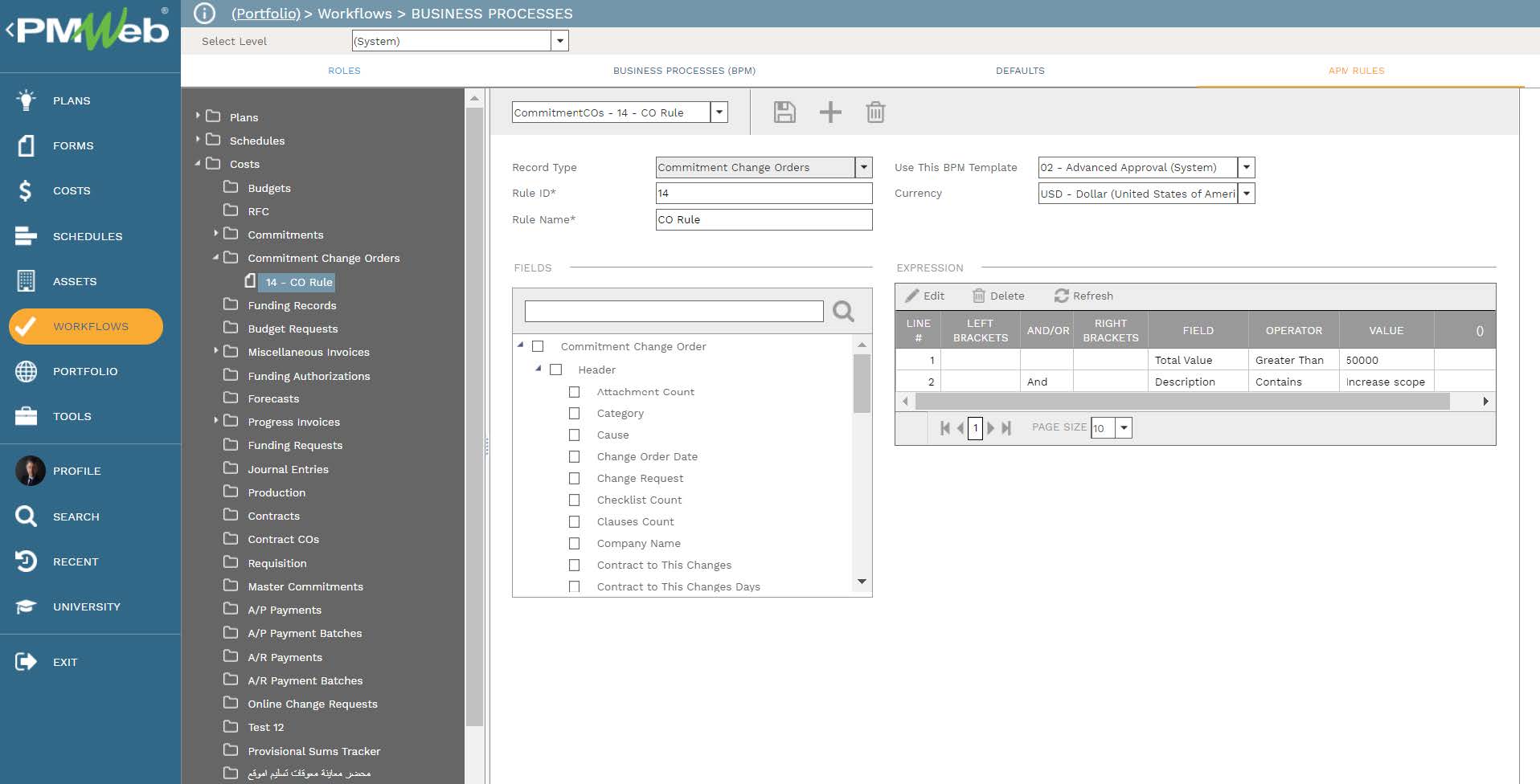
PMWeb also allows creating branches within the workflow steps to delegate the responsibility for performing the workflow tasks according to the conditions defined in the DOA. The assigned workflow for each business process type automatically forwards the transaction to the role or user assigned to the next workflow task based on the rules set at each workflow branch.
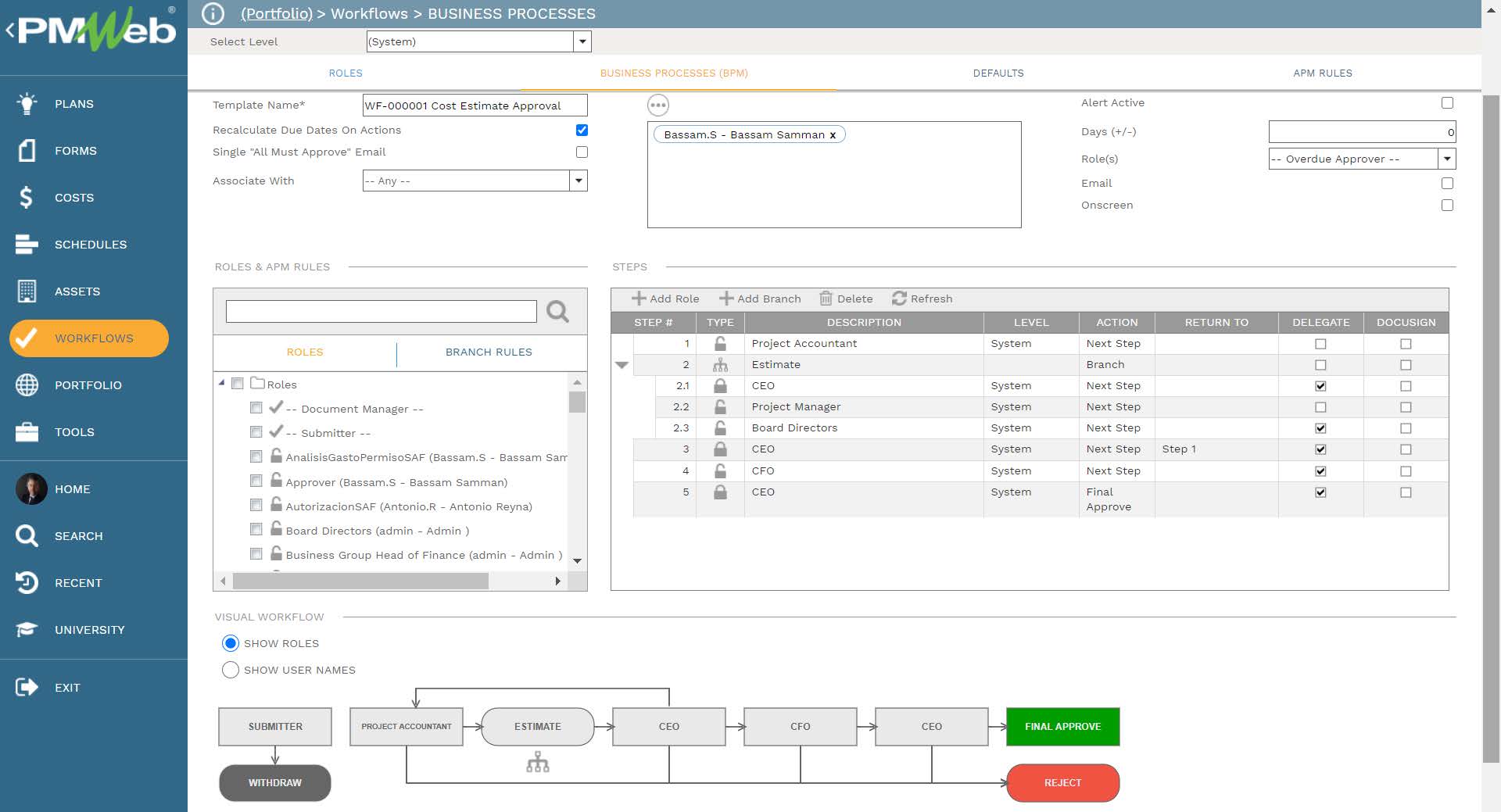
Every task in the workflow needs to be further defined to identify the duration assigned to each task, who to copy on the workflow task, and how to send the workflow task notification. It could be either via email, on-screen, or both. In addition, PMWeb allows defining the actions, which can be renamed, available for the role assigned to the task.
These could include Proceed, Return, Reject, Withdraw, Finally Approve, User Can Delegate, and User Can Request Team Input and Comment. For example, for the Return action, PMWeb allows defining to whom the workflow needs to be returned. In the case of resubmitting the workflow, PMWeb allows defining from which workflow task the resubmission process should start. In other words, which workflow tasks the team member can skip.
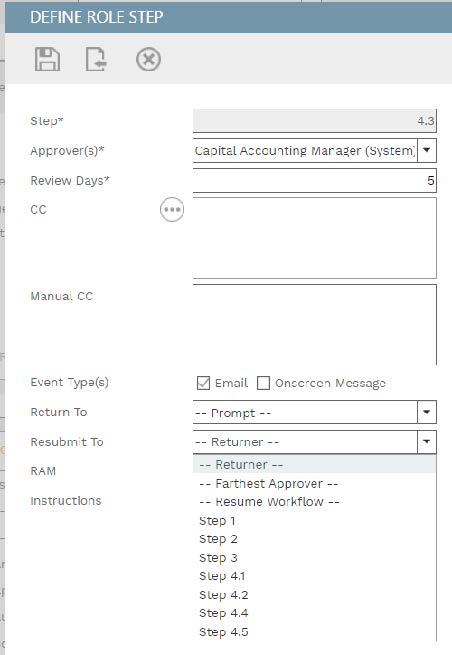
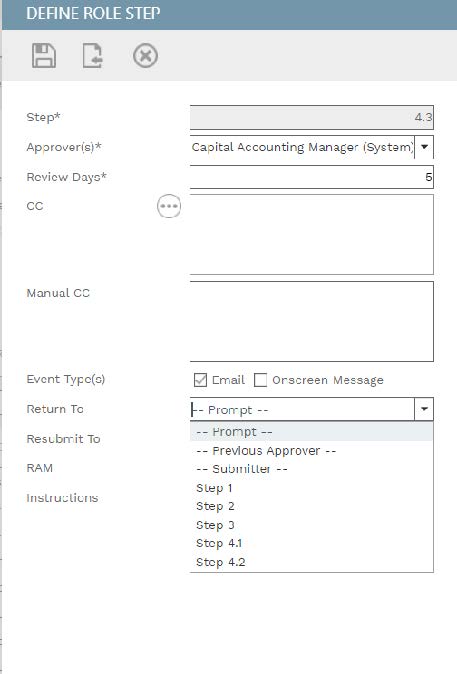
PMWeb also allows the adding of instructions for each workflow task. As well, PMWeb allows assigning options for each workflow task. These could include either all must or any individual can approve a task when more than one role is assigned to the task. In addition, PMWeb allows setting options if the role assigned to the workflow can edit ‘record,’ ‘record notes,’ and ‘record attachments.’ Other options include requiring the adding of comments and whether the workflow is to be digitally signed using DocuSign or not.
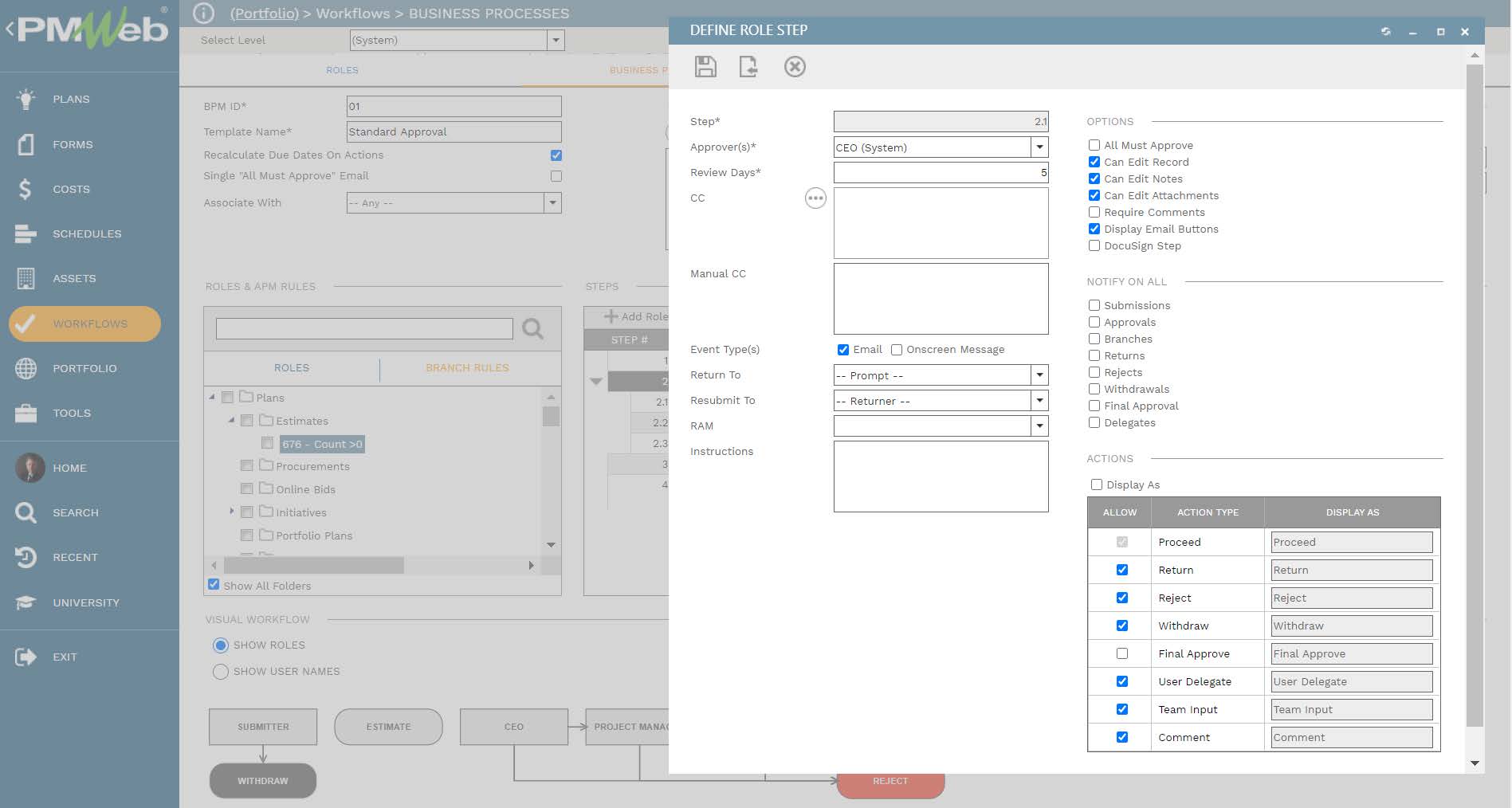
PMWeb also provides a visual approach to creating the business process workflow in a visual interface. PMWeb allows the creation of workflow tasks in the desired sequence by dragging and dropping the roles assigned to perform the task. In addition, there is the option of dragging and dropping branch rules into the workflow.
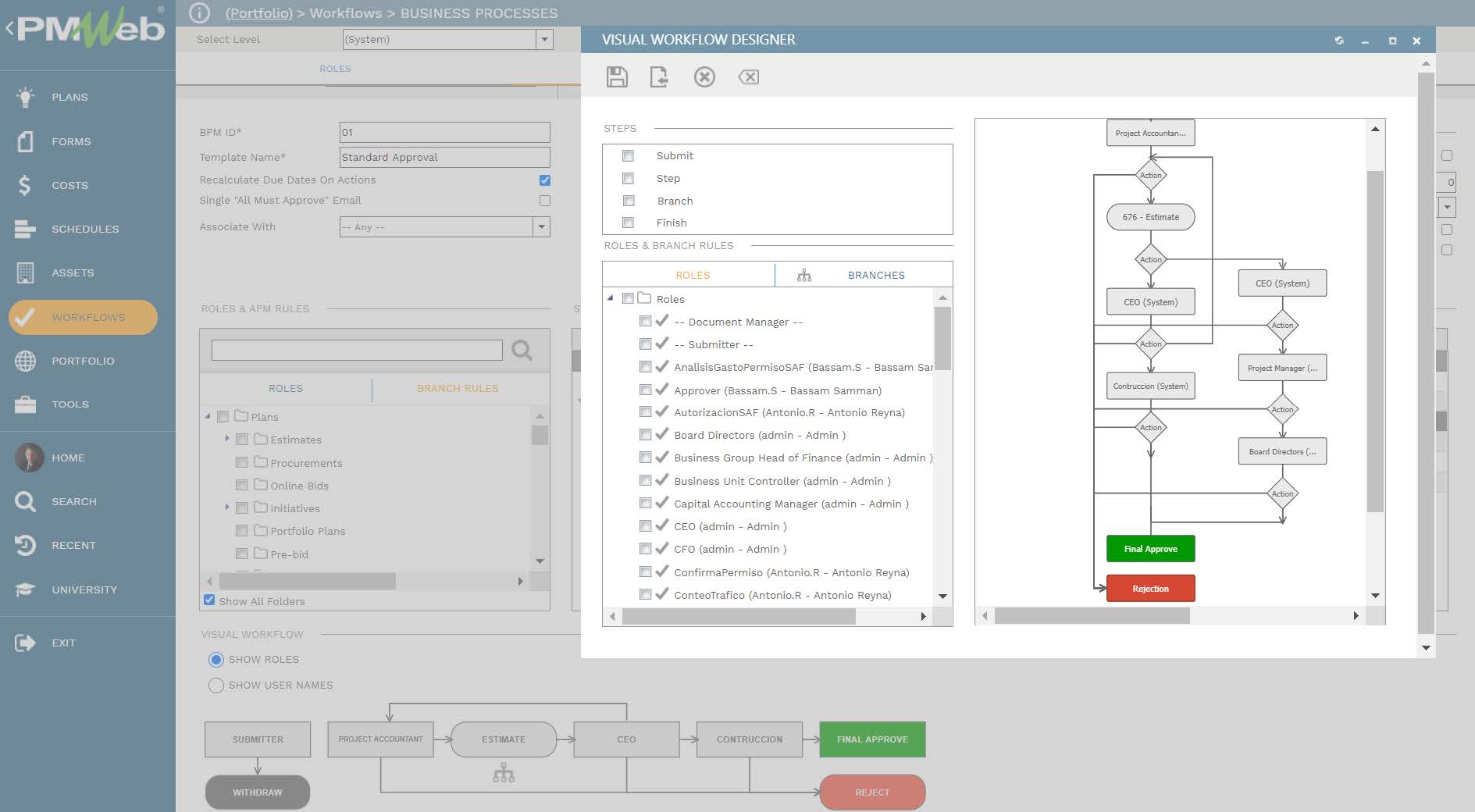
The configured workflow to automate the project management process or processes is now complete and ready to be assigned to the selected process or processes if they share the same workflow tasks and sequence. The steps explained above may be repeated to create other workflows that could be at a system level, be specific to a program of projects, or be specific to just one project.
It should be noted, of course, that some business processes managed in PMWeb may not require a workflow. For example, meeting minutes could include a workflow but use the transmittal module, with a workflow to submit, review and approve these transmitted meeting minutes.
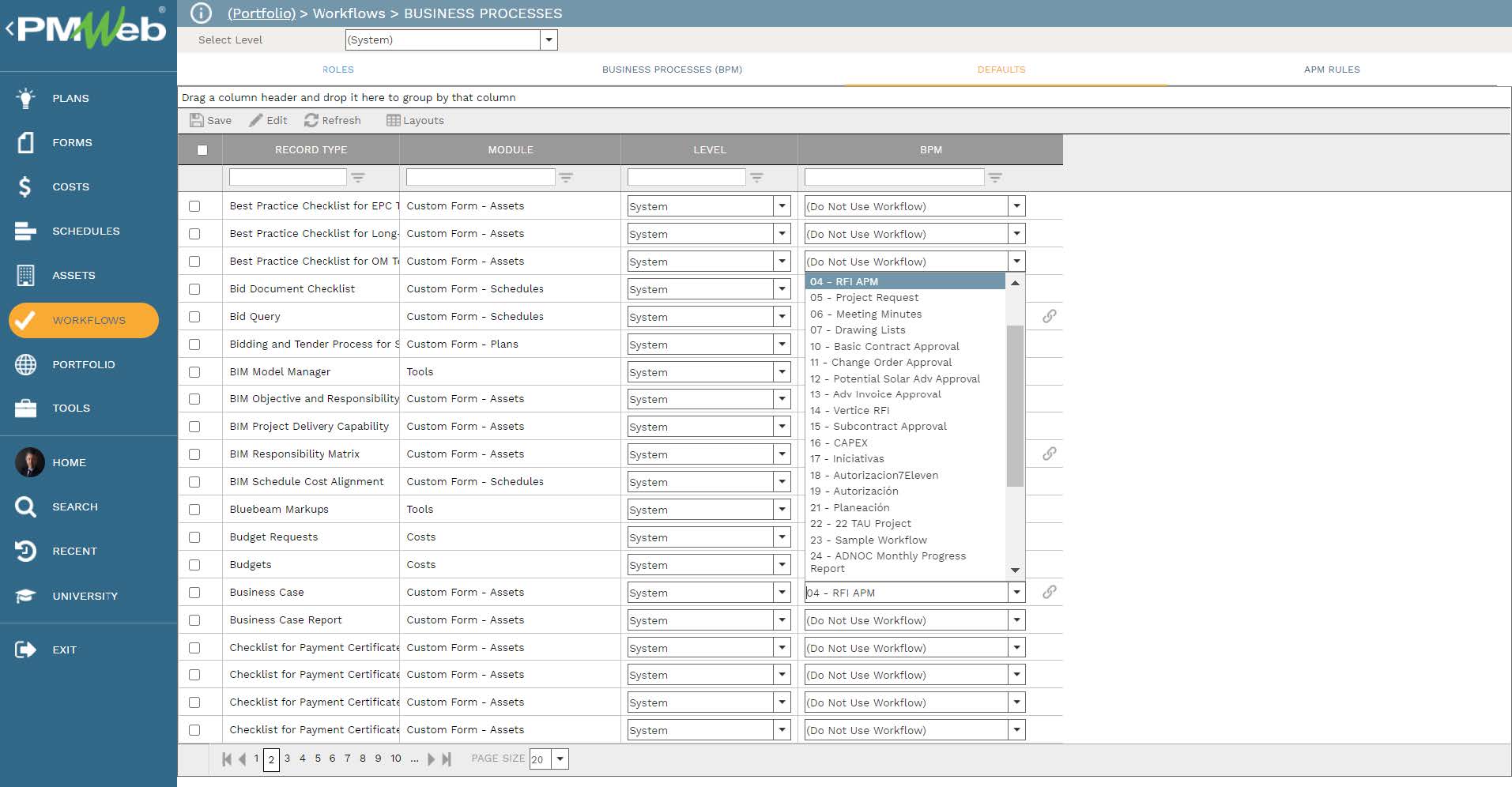
When an individual is required to take action on one of the project management processes, assuming, for example, the RFI process, the workflow email notification template is automatically selected depending on the action selected by the individual. This individual could add comments to the workflow task, which would appear in the workflow email notification if the comment field was selected to be displayed. As well, PMWeb provides the option to carbon copy (cc) other individuals who could be PMWeb or non-PMWeb users.
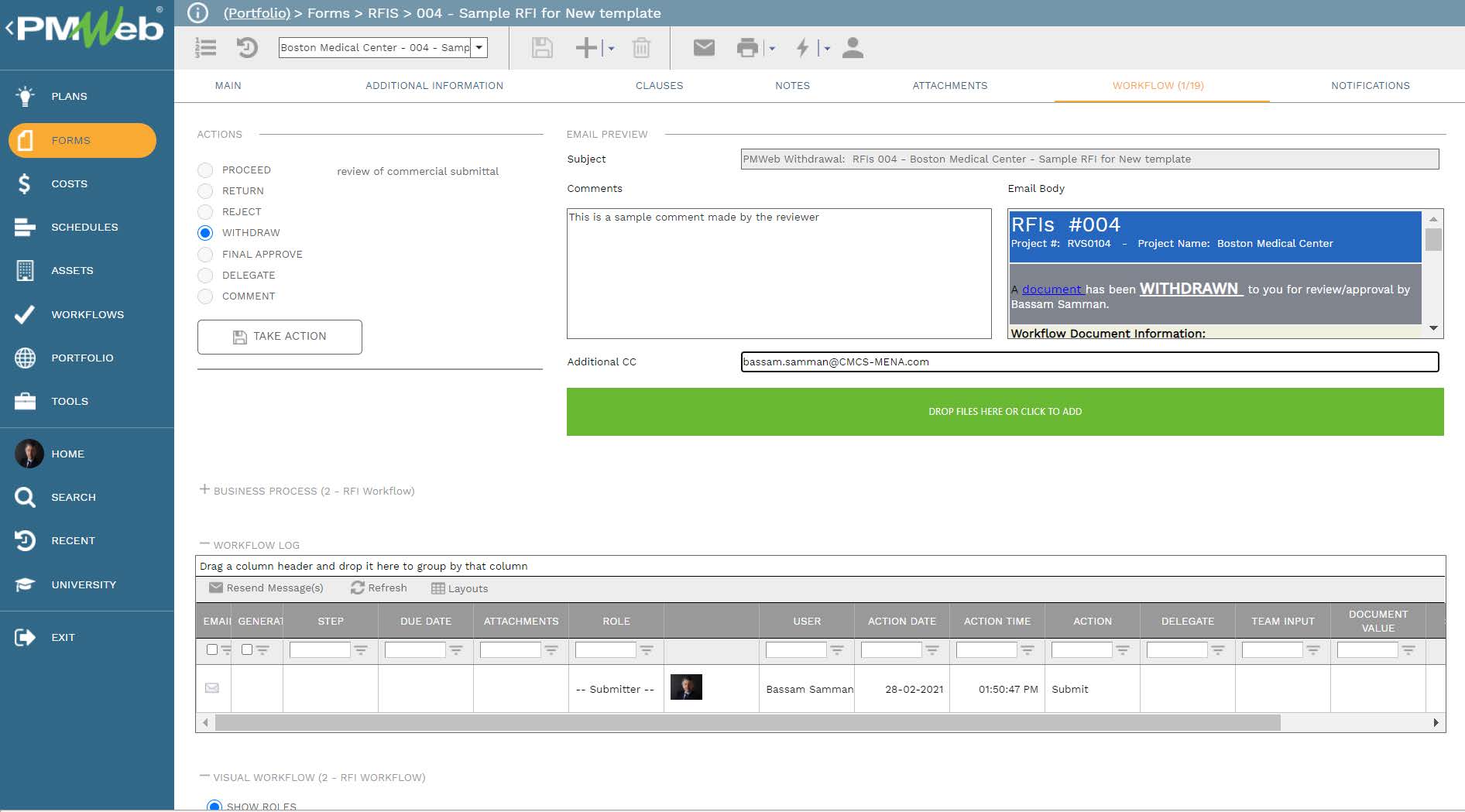
The workflow email notification, along with all attachments is received by the intended recipient if it has been defined to be added to the workflow task. This recipient can click on the document hyperlink to access the original record in PMWeb, open the attachments, or even forward the email itself to others if needed. These customized workflow email notifications provide all needed information for clear, easy-to-understand, and actionable notifications that can be searched for their content or be attached or shared with other individuals.
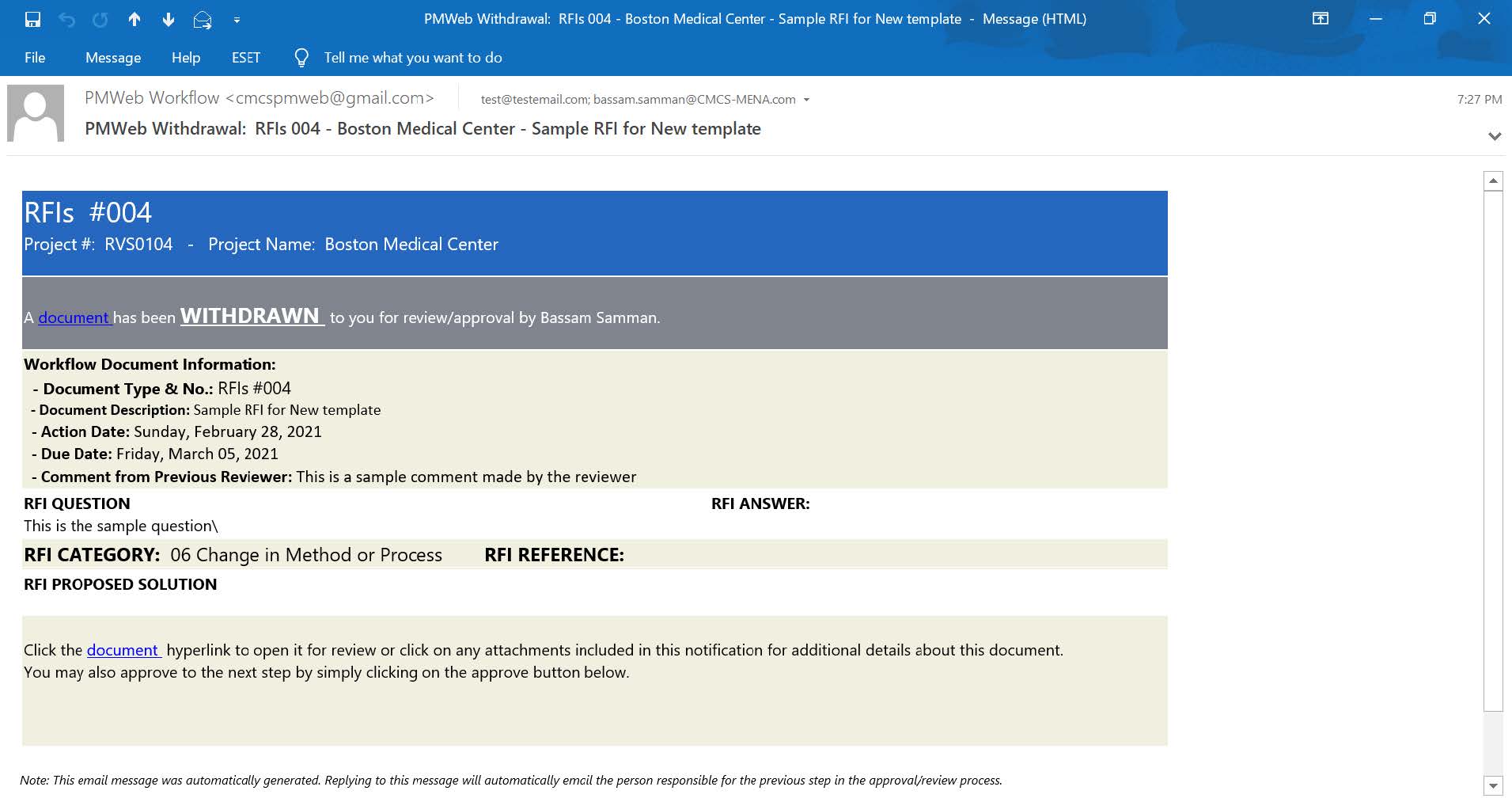
The actual actions taken by each user is captured on its related transaction of the business process and in the workflow tab. PMWeb captures the reviewer details for each workflow task, including the date and time when the action was taken. The workflow log also details comments made and whether the input was requested from other individuals who are not part of the pre-defined workflow tasks.
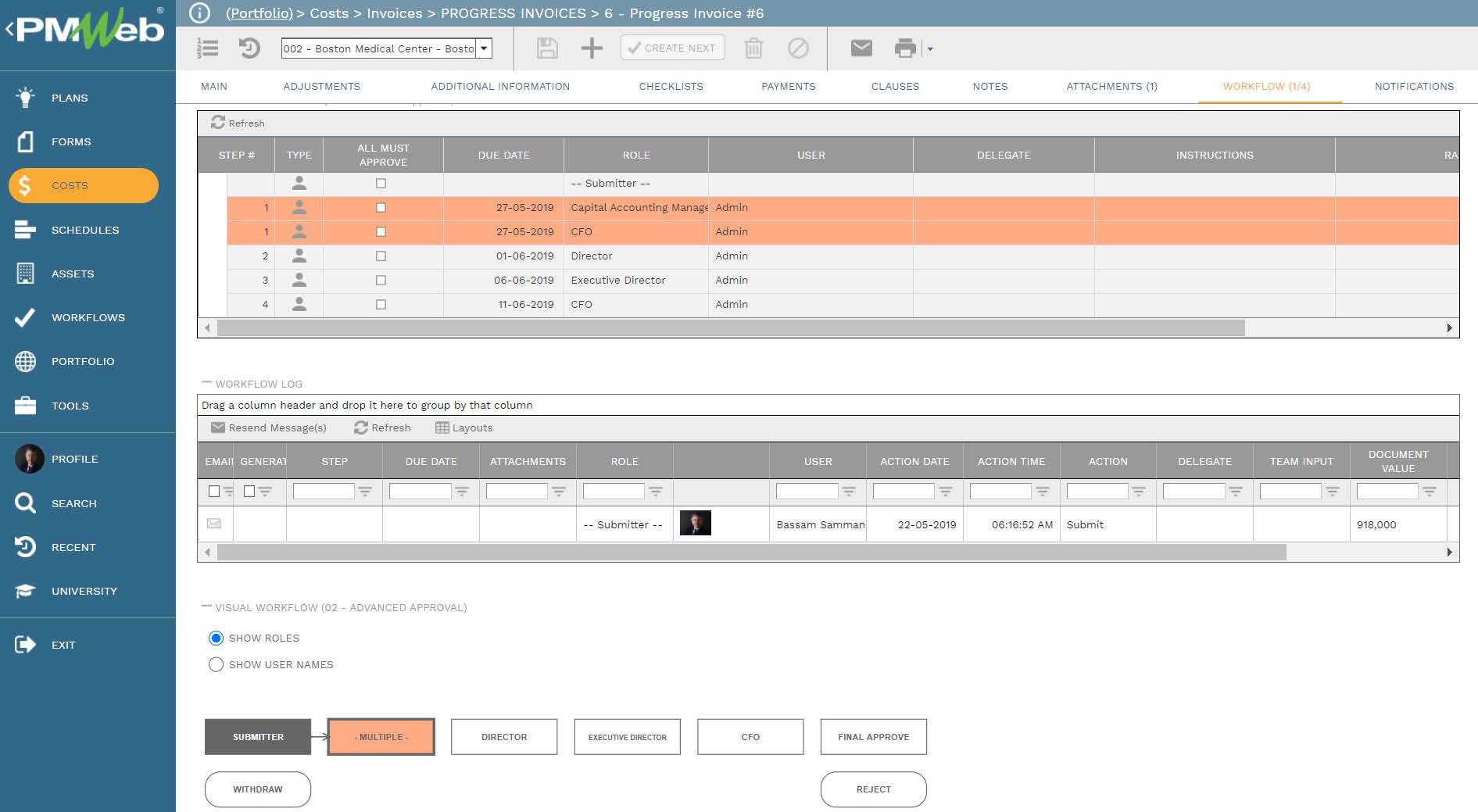
Most capital construction projects require all formal communications to be on the output form for the business process. PMWeb allows designing those output forms in any desired form and format, including displaying the status of the workflow tasks assigned to the process. This output form can then be printed and wet-signed or saved as a PDF file and digitally signed by DocuSign if this has been agreed on. This provides the reader with a complete history of the submit, review, and approve tasks for the record of each business process.
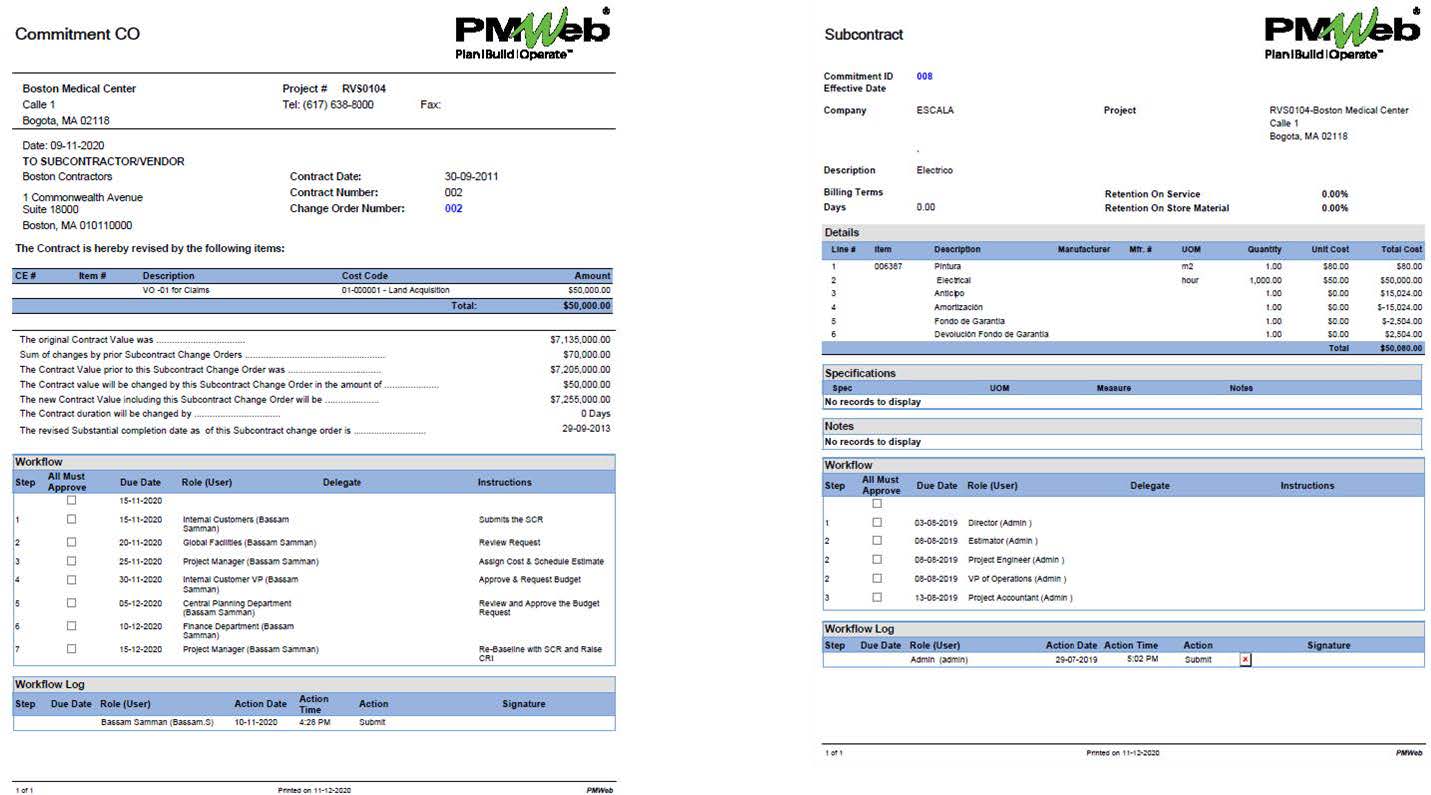
Reference
The content of this article was extracted from the book titled “Let’s Transform: Enabling Digital Transformation of Capital Construction Projects Using the PMWeb Project Management Information System – 2nd Edition”. The book was written by the author of the posted article, Bassam Samman.
The book provides project owners with oversight on how technology available today can support their efforts to digitally transform the management of their projects’ portfolios. For each capital project life cycle stage, PMWeb is used to detail how the relevant project management business processes can be digitalized to enforce transparency and accountability in delivering projects. In addition, MS Power BI was used to show how the real-time, trustworthy data captured in PMWeb can be aggregated, modeled, monitored, evaluated, analyzed, and reported at anytime, anywhere using any device.



